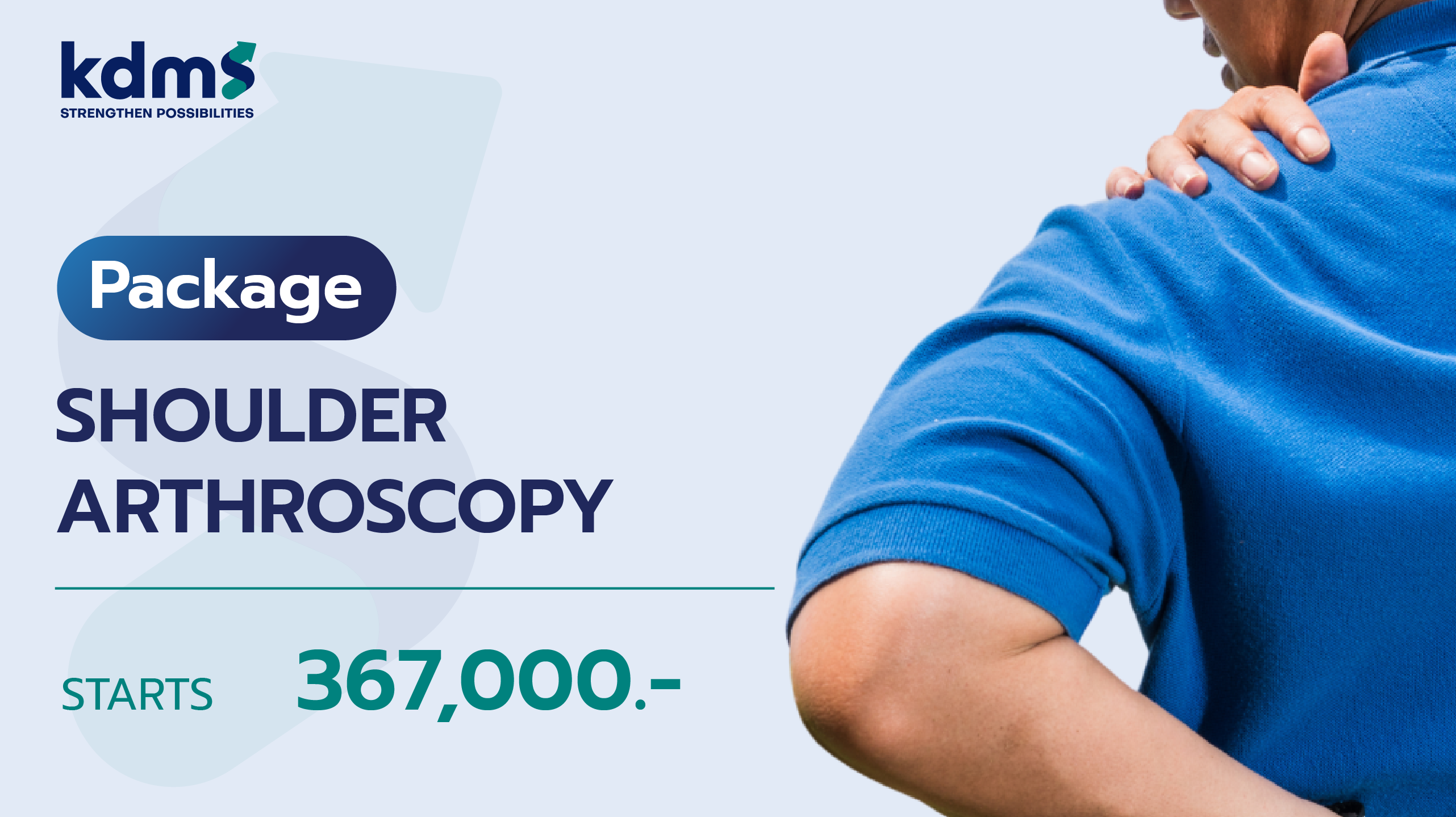วิ่งแล้วเจ็บเข่า เจ็บข้อเท้า สำหรับนักวิ่งทั่วไปดูแลตัวเองอย่างไรดี
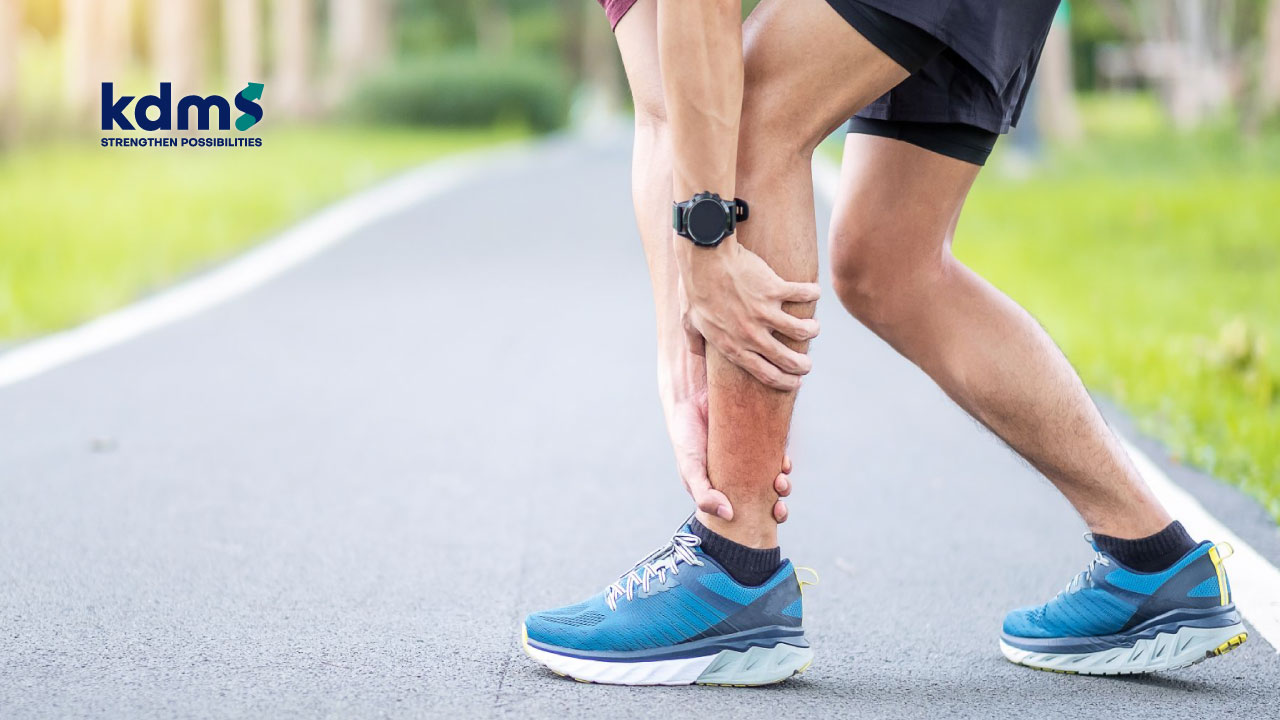
ปัญหาอาการเจ็บเข่า เจ็บข้อเท้า และอวัยวะที่ใช้ในการวิ่ง เป็นปัญหาที่พบได้ในนักวิ่งทั่วไป ซึ่งอาการเหล่านี้สามารถดูแลรักษา ฟื้นฟูให้กลับมาแข็งแรงพร้อมวิ่งได้ดังเดิม เพียงแต่ต้องเข้าใจว่าอาการบาดเจ็บนั้นมีสาเหตุมาจากอะไร เพื่อการแก้ไขที่ตรงจุด
สาเหตุของอาการบาดเจ็บที่เกิดจากการวิ่งมีหลากหลาย ซึ่งโดยเบื้องต้นสามารถแบ่งได้ออกเป็นหมวดใหญ่ๆ ได้สองประเภท คือ
- การบาดเจ็บจากอุบัติเหตุ เช่น ข้อเท้าพลิก หกล้ม ชนสิ่งกีดขวางต่างๆ
- การบาดเจ็บจากการวิ่งที่เกิดจากการใช้งานกล้ามเนื้อ ข้อต่อผิดวิธี หรือมากจนเกินไป
การบาดเจ็บที่เกิดจากอุบัติเหตุนั้นการรักษาจะเป็นไปตามการวินิจฉัยของแพทย์ออโธปิดิกส์ แต่การบาดเจ็บจากการใช้งานนั้นจะต้องเน้นการวิเคราะห์หาสาเหตุเพื่อแก้ไขหรือปรับพฤติกรรม การเสริมสร้างกล้ามเนื้อ และการฝึกทักษะต่าง ๆ เพื่อให้ฟื้นฟูกลับมาแข็งแรง กลับไปวิ่งได้อย่างมีความสุขอีกครั้ง
ซึ่งในบทความนี้จะเน้นไปที่อาการบาดเจ็บหัวเข่าและข้อเท้า ที่ไม่ใช่อุบัติเหตุในนักวิ่งที่สามารถเข้าใจและทำตามได้ด้วยตนเอง
อ่านต่อ บทความเกี่ยวกับการบาดเจ็บข้อเท้า ข้อเข่า
ข้อเท้าพลิก – ‘ข้อเท้าพลิก’ อาการบาดเจ็บที่อาจเรื้อรังและอันตรายได้ หากไม่รักษาให้ทันท่วงที
เจ็บหัวเข่า – วิเคราะห์อาการปวดหัวเข่า ปวดข้อเข่า แบบไหนอย่างไรจึงควรพบแพทย์
เจ็บข้อเท้า – เจ็บข้อเท้า อาการบาดเจ็บใกล้ตัวที่คุณไม่ควรละเลย
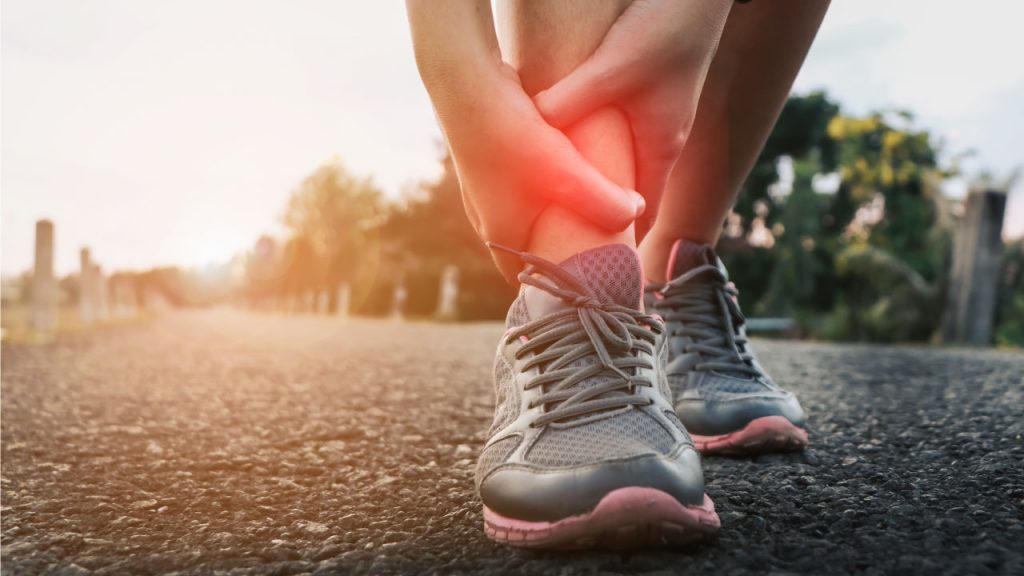
Table of Contents
Running Injuries: อาการบาดเจ็บข้อเท้า ข้อเข่า จากการวิ่ง
สำหรับนักวิ่งทั่วไป อาการบาดเจ็บมักจะเกิดขึ้นได้ในขณะที่วิ่ง หรือหลังจากที่วิ่งเสร็จแล้ว ซึ่งสาเหตุโดยทั่วไปเกิดจากการใช้งานกล้ามเนื้อ-ข้อต่อมากจนเกินความสามารถ หรือกล้ามเนื้อ-ข้อต่อที่ยังไม่แข็งแรงเพียงพอ เมื่อต้องใช้งานหนักจะเกิดอาการบาดเจ็บ
โดยอาการบาดเจ็บส่วนหนึ่งอาจเกิดจากอุปกรณ์กีฬา เช่น รองเท้าเสียดสี เสื้อผ้าที่ไม่เหมาะสม ฯลฯ ซึ่งนับเป็นการบาดเจ็บในอีกบริบทหนึ่งที่แก้ไขได้จากอุปกรณ์ในการวิ่ง รวมถึงการเตรียมตัวอื่นๆ
ปัจจัยที่ส่งผลต่ออาการบาดเจ็บข้อเข่า ข้อเท้า จากการวิ่ง
เพศ และอายุ
- เพศ – ตามการศึกษาที่ผ่านมามักจะมีการระบุว่าผู้หญิงจะบาดเจ็บได้ง่ายกว่า แต่ในปัจจุบันนี้ งานวิจัยต่างๆ ที่ตีพิมพ์ออกมาจะระบุว่า “เพศ” ไม่ใช่ปัจจัยสำคัญแล้ว แต่มักขึ้นอยู่กับความแข็งแรงของกล้ามเนื้อข้อต่อ หรือโปรแกรมเทรนนิ่งที่ถูกต้องเสียมากกว่า โดยเฉพาะในการวิ่งระยะที่ไกลขึ้นกว่าการวิ่งระยะ 5-10 กิโลเมตร
- อายุ – ส่วนเรื่องของ “อายุ” ถ้าหากเป็นการวิ่งระยะสั้น การบาดเจ็บมักจะเกิดขึ้นกับคนที่อายุมากกว่าหนุ่มสาวเป็นปกติ แต่ถ้าหากเป็นการวิ่งระยะไกล อย่างเช่น ระยะมาราธอน หรืออัลตร้ามาราธอนพบว่าปัจจัยเรื่องอายุอาจส่งผลน้อยลงจากประสบการณ์ของนักวิ่งนั่นเอง
จึงสามารถสรุปได้ว่า การฝึกซ้อมและเตรียมความแข็งแรงของกล้ามเนื้อและข้อต่ออย่างถูกต้องเหมาะสม สามารถทำให้ปัจจัยเหล่านี้มีผลน้อยลงได้
การวอร์มอัพ คูลดาวน์ ยืดเหยียด
การวอร์มอัพ หรือการอุ่นเครื่องก่อนออกกำลังกาย คือ สิ่งจำเป็นที่นักกีฬาต้องทำก่อนออกวิ่ง เพื่อช่วยให้ร่างกาย กล้ามเนื้อ และข้อต่อพร้อมสำหรับการวิ่ง และช่วยลดโอกาสการบาดเจ็บได้
การเตรียมก่อนออกกำลังกาย หรือวอร์มอัพ
Dynamic Stretching: การอุ่นเครื่องร่างกายสำหรับการวิ่งจะใช้วิธีที่เรียกว่า Dynamic Stretching คือการยืดเหยียดแบบขยับ เพื่อเตรียมกล้ามเนื้อและข้อต่อให้ได้ยืดหดอย่างเหมาะสม ร่วมกับการวิ่งเหยาะ ๆ ให้หัวใจได้เต้นในระดับ 50% ของอัตราการเต้นหัวใจสูงสุด โดยใช้เวลาเพียง 10-15 นาที นักวิ่งจะรู้สึกร่างกายอุ่นและพร้อมสำหรับการวิ่งมากขึ้น
การอบอุ่นร่างกายแบบนี้นอกจากทำให้พร้อมในการออกกำลังกายแล้ว ยังทำให้ประสิทธิภาพในการออกกำลังกายดีขึ้นอีกด้วย อย่างที่เราได้เห็นเวลาถ่ายทอดวอลเลย์บอล จะเห็นว่านักกีฬามักจะวอร์มอัพด้วยการวิ่งรอบสนาม หรือมีการเต้นแอโรบิคก่อนงานวิ่งทุกงาน เป็นต้น
หลังออกกำลังกาย และยืดเหยียด
Static Stretching: หลังวิ่ง นักวิ่งควรลดความเร็วจนเป็นการเดินก่อนและค่อยๆ พัก เพื่อให้หัวใจค่อยๆ ทำงานเบาลง เมื่อหายเหนื่อยก็ต่อด้วยการทำ Static stretching หรือการยืดเหยียดแบบค้าง เพราะหลังจากที่เราใช้กล้ามเนื้อหนักๆ มาระยะเวลาหนึ่ง กล้ามเนื้อจะเกิดการตึงตัวการยืดเหยียดแบบค้าง จะช่วยคลายกล้ามเนื้อออก และช่วยขับของเสียให้ออกไปจากกล้ามเนื้อได้เร็วขึ้นด้วย
การยืดแบบ static stretching นั้นเราจะใช้เวลาในการนับค้างในแต่ละท่านาน 10-15 วินาที ซึ่งเหมาะสำหรับการยืดเหยียดหลังวิ่งเพื่อช่วยยืดกล้ามเนื้อให้คลายลงกลับสู่สภาวะปกติ แต่ถ้าหากว่าไม่ยืดเหยียดเลย ความตึงตัวของกล้ามเนื้อจะสะสม เรามีโอกาสจะบาดเจ็บได้มากขึ้นจากการใช้งานของกล้ามเนื้อและข้อต่อที่ยึดตึงไม่ปกตินั่นเอง
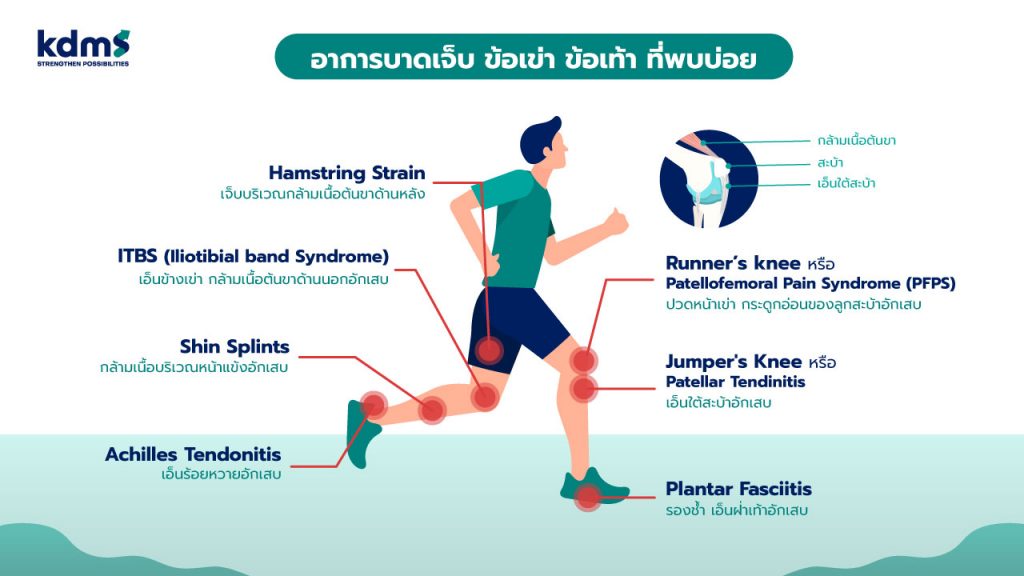
อาการบาดเจ็บ ข้อเข่า ข้อเท้า ที่พบได้บ่อยในนักวิ่งทั่วไป
สำหรับนักวิ่งบนถนนโดยทั่วไป อาการบาดเจ็บที่พบได้บ่อยมักจะเป็นบริเวณข้อเข่า และข้อเท้า ตามลำดับ
อาการบาดเจ็บจากการวิ่งที่พบได้บ่อย เช่น
- Runner’s knee หรือ Patellofemoral Pain Syndrome (PFPS) ปวดหน้าเข่า กระดูกอ่อนของลูกสะบ้าอักเสบ
- Jumper’s Knee หรือ Patellar Tendinitis เอ็นใต้สะบ้าอักเสบ
- ITBS (iliotibial band Syndrome) เอ็นข้างเข่า กล้ามเนื้อต้นขาด้านนอกอักเสบ
- Hamstring Strain เจ็บบริเวณกล้ามเนื้อต้นขาด้านหลัง
- Shin Splints กล้ามเนื้อบริเวณหน้าแข้งอักเสบ
- Plantar Fasciitis รองช้ำ เอ็นใต้ฝ่าเท้าอักเสบ
- Achilles Tendonitis เอ็นร้อยหวายอักเสบ
เจาะลึกอาการบาดเจ็บ ข้อเข่า ข้อเท้า ของนักวิ่งที่พบบ่อย
Runner’s Knee หรือ Patellofemoral Pain Syndrome (PFPS) กระดูกอ่อนข้อเข่าอักเสบ
- เป็นอาการเจ็บบริเวณด้านหน้าเข่า ที่พบบ่อยที่สุดของนักวิ่ง
- มีจุดกดเจ็บไม่ค่อยชัดเจน
- จะมีเสียงก๊อบแก๊บตรงเข่า ที่เป็นเฉพาะตอนวิ่งหรือเดินลงบันได
- นานๆ ทีอาจมีอาการบวมแดงได้บ้าง
- เน้นการเสริมสร้างความแข็งแรงกล้ามเนื้อ Quadriceps กับ Hamstring รวมถึงกล้ามเนื้อสะโพก ต้นขา น่อง เพื่อป้องกันอาการบาดเจ็บข้างเคียง
Jumper’s Knee หรือ Patellar Tendinitis เอ็นใต้สะบ้าอักเสบ
- จุดกดเจ็บจะชัดเจน บริเวณหน้าเข่าใต้ลูกสะบ้า
- มีอาการบวม แดง ร้อน ได้ชัดเจน
- ยิ่งมีการงอเข่าจะยิ่งปวด
- พบได้บ่อยจากการวิ่งก้าวเท้ายาว วิ่งขึ้น – ลงเนิน หรือวิ่งบนพื้นที่ผิวขรุขระ
ITBS (iliotibial band Syndrome) เอ็นนอกของเข่า กล้ามเนื้อต้นขาด้านนอกอักเสบ
- อาการบาดเจ็บ ITBS จะเจ็บบริเวณเข่าด้านนอก ส่วนใหญ่จะรู้สึกตอนที่งอเหยียดเข่า หรืออาจจะเจ็บตอนที่วิ่งหรือหลังจากที่วิ่งเสร็จแล้ว
- บริเวณจุดกดเจ็บชัดเจน บางคนบวมแดง บางคนปวด จะร้าวไปทั้งต้นขา ไปถึงสะโพก
- พบได้บ่อยในนักวิ่งทั่วไปและนักวิ่งเทรล มักจะมีอาการปวดระหว่างที่วิ่งลงบันไดหรือลงทางลาดชัน
- สำหรับนักวิ่งเทรลส่วนใหญ่ก็จะเดินขึ้นสบาย แต่วิ่งลงไม่ได้ ต้องค่อยๆ แตะลงขาตรงๆ เพราะงอเหยียดแล้วเจ็บมาก
- เมื่ออาการเจ็บลดลงแล้ว ควรยืดเหยียดสะโพก กล้ามเนื้อสะโพก และเวทเทรนนิ่งกล้ามเนื้อกรามสะโพก
Hamstring Strain เจ็บบริเวณกล้ามเนื้อต้นขาด้านหลัง
- มักจะเจ็บแปลบบริเวณต้นขาด้านหลัง
- เนื่องจากกล้ามเนื้อตึงเกินไป ไม่ยืดหยุ่น และกล้ามเนื้อ Hamstring ไม่แข็งแรงเพียงพอต่อการใช้งาน
- ควรวอร์มอัพ และยืดเหยียดกล้ามเนื้อก่อนวิ่ง รวมทั้งยืดเหยียดหลังวิ่ง เพื่อให้กล้ามเนื้อยืดหยุ่น คลายจากการหดตัว
- ที่สำคัญคือการเวทเทรนนิ่งกล้ามเนื้อรอบสะโพก และรอบเข่าให้แข็งแรง โดยไม่เน้นไปที่กล้ามเนื้อ Quadriceps เพียงอย่างเดียว
Shin Splints กล้ามเนื้อบริเวณหน้าแข้งอักเสบ
- อาการบาดเจ็บที่เกิดจากการวิ่งระยะทางมากเกินไป หรือหักโหมเกินไป
- รวมถึงการเพิ่มความเร็วเกินกำลัง หรือรองเท้าพื้นแข็งเกินไป พื้นถนนที่ไม่เรียบ
- ควรฝึกวิ่งด้วยการค่อยๆ เพิ่มระยะทาง และความเร็ว
- ควรมีการยืดเหยียดกล้ามเนื้อหน้าแข้งและกล้ามเนื้อน่องอย่างเหมาะสมอยู่เสมอ และเวทเทรนนิ่งกล้ามเนื้อหน้าแข้งเป็นประจำ
Achilles Tendonitis เอ็นร้อยหวายอักเสบ
- เจ็บ บวม แดง บริเวณเอ็นร้อยหวาย อาจเจ็บลามมาถึงน่อง
- มักเกิดกับนักวิ่งเทรล เพราะเกี่ยวข้องกับการวิ่งบนพื้นที่ไม่เรียบ และมีการขึ้นลงเนิน
- ถ้าเกิดอาการบาดเจ็บเอ็นร้อยหวาย ควรหยุดพักทันที เพื่อไม่ให้การอักเสบลุกลาม
- เน้นการยืดน่องทีละน้อย ด้วยการยืนบนแผ่นกระดานเอียง หรือท่าดันกำแพง
- เพิ่มการเวทเทรนนิ่งด้วยการเขย่งขึ้นลง หลังจากที่อาการอักเสบหายดีแล้ว
Plantar Fasciitis รองช้ำ เอ็นใต้ฝ่าเท้าอักเสบ
- รองช้ำ เกิดขึ้นได้กับนักวิ่งทั่วไป
- มักเกิดจากน่องที่ตึงมากๆ ทำให้พังผืดฝ่าเท้าทำงานหนัก
- อาการเจ็บตอนเช้า หรือตอนเช้าที่เดินก้าวแรกแล้วเจ็บ เมื่อเดินไปสักพักจะอาการดีขึ้น
- ถ้าหากเจ็บฝ่าเท้าตลอดเวลา ยิ่งเดินยิ่งเจ็บมากขึ้น จะมีอาการบาดเจ็บของเอ็นภายในฝ่าเท้าอื่นๆ ร่วมด้วย
- แนะนำท่ายืดน่อง Calf Stretching เพื่อให้พังผืดใต้ฝ่าเท้าคลายตัว
- เสริมความแข็งแรงของกล้ามเนื้อในฝ่าเท้าด้วยท่า Towel Exercise หรือฝ่าเท้าขยุ้มผ้า ให้กล้ามเนื้อฝ่าเท้าได้ทำงาน

การรักษาอาการบาดเจ็บข้อเข่า ข้อเท้า สำหรับนักวิ่งทั่วไป
สำหรับนักวิ่งโดยทั่วไปแล้ว เมื่อเกิดอาการบาดเจ็บเฉียบพลันควรยึดหลัก R.I.C.E ซึ่งก็คือ
- Rest การหยุดพัก เมื่อเกิดอาการ
- ICE ประคบด้วยน้ำแข็งบริเวณที่บาดเจ็บ 2-3 วันแรก
- Compress การพันกระชับให้บริเวณที่บาดเจ็บเคลื่อนไหวน้อยที่สุด
- และ Elevation ยกเท้าสูง ให้เลือดไหลเวียน
ซึ่งโดยปกติที่ไม่ใช่กรณีร้ายแรง เมื่อหยุดพัก ประคบเย็นแล้วมักจะหายได้เอง เมื่อกลับไปวิ่งแล้วไม่มีอาการอีกก็ถือว่าหายเป็นปกติ แต่ในกรณีที่ยังไม่หาย หรือกลับเป็นซ้ำเรื่อยๆ ควรไปพบแพทย์ เพราะอาจเกิดจากการอักเสบเรื้อรัง หรือมีกล้ามเนื้อที่ไม่สมดุล ไม่แข็งแรงเพียงพอ รวมถึงมีบ่อยครั้งที่นักวิ่งมักเลือกรักษาตัวเอง เช่น เมื่อวิ่งแล้วเจ็บเข่า ก็จะเปลี่ยนท่าวิ่ง ซึ่งทำให้ไปเจ็บบริเวณหน้าแข้งแทน จนสักพักเมื่อขาทำงานไม่ไหวจะลุกลามไปเจ็บบริเวณสะโพกร่วมด้วย
หากเกิดอาการบาดเจ็บบริเวณใดจากการวิ่งก็ตาม ถ้าหยุดพักแล้วอาการไม่ดีขึ้น ควรปรึกษาแพทย์ผู้เชี่ยวชาญเพื่อการวิเคราะห์และให้คำแนะนำการรักษาได้ตรงจุด
การออกกำลังกายเสริมสร้างความแข็งแรงกล้ามเนื้อสำหรับนักวิ่ง
แม้ว่าจะมีท่าทางการออกกำลังกายเพื่อเสริมสร้างความแข็งแรงของกล้ามเนื้อร่างกายท่อนล่างสำหรับนักวิ่ง แยกเฉพาะเป็นส่วนต่างๆ ตามอาการบาดเจ็บ แต่สิ่งที่ควรจะทำคือการออกกำลังกายสะโพก ต้นขา น่อง ฯลฯ ทั้งหมด เพื่อให้กล้ามเนื้อทุกส่วนแข็งแรงเพียงพอ ป้องกันการบาดเจ็บจากการลุกลามได้ด้วย
มีงานวิจัยมากมาที่พูดถึงอาการบาดเจ็บที่เข่า โดยเฉพาะหน้าเข่า ระบุว่าถ้ากล้ามเนื้อกางสะโพก (Hip Abductor Muscles) แข็งแรง จะลดโอกาสการเจ็บเข่าลงได้ หรือคนที่บาดเจ็บเข่า หลังจากรับการรักษาแล้วควรจะเสริมกล้ามเนื้อ Quadriceps ร่วมกับ Hamstring และกล้ามเนื้อสะโพก เพราะว่ามีความสัมพันธ์ระหว่างการทำงานของกล้ามเนื้อสะโพกกับเข่า
โดยสรุป อาการบาดเจ็บจากการวิ่งเกิดขึ้นได้ และรักษาให้หายได้เช่นกัน แต่การวินิจฉัยที่ถูกต้องและแผนการรักษาที่เหมาะสมจะทำให้อาการบาดเจ็บหายได้อย่างรวดเร็ว และจะเน้นการเสริมสร้างกล้ามเนื้อและร่างกายที่แข็งแรงเพื่อให้อาการบาดเจ็บไม่ลุกลาม เพื่อการวิ่งที่สมบูรณ์แบบ
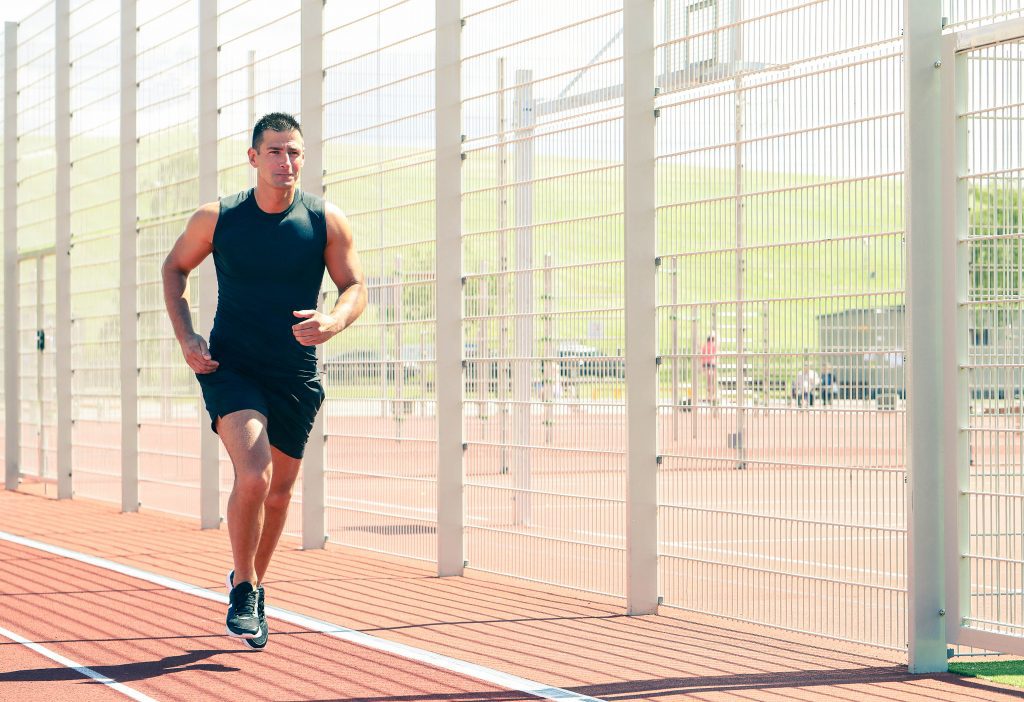
Q&A คำถามที่พบบ่อยสำหรับนักวิ่งทั่วไป
Q: อุปกรณ์ช่วยพยุงสำหรับนักวิ่งช่วยได้จริงไหม จำเป็นหรือไม่
อุปกรณ์ช่วยพยุง แม้จะไม่ได้ช่วยลดแรงกระแทก แต่ก็ช่วยกระจายแรงได้บ้าง เพราะหลักการของอุปกรณ์คือช่วยพยุงข้อทำให้รู้สึกมั่นคง และช่วยผ่อนแรงกล้ามเนื้อในระหว่างใช้งาน หรือหากมีอาการบาดเจ็บ อุปกรณ์จะช่วยทำให้จุดที่บาดเจ็บมีการขยับน้อยลง ซึ่งทำให้เจ็บน้อยลงด้วยเช่นกัน
แต่ไม่แนะนำให้ใส่อุปกรณ์พยุงตลอดเวลา เพราะการใส่อุปกรณ์ไม่ใช่การรักษา แต่เป็นการประคับประคองอาการ การรักษาที่ถูกต้องของอาการเจ็บเข่าและข้อเท้าคือการพัก กินยา กายภาพบำบัด และออกกำลังกายให้กล้ามเนื้อแข็งแรง
Q: เลือกรองเท้าวิ่งอย่างไรให้วิ่งแล้วไม่เจ็บ
สำหรับนักวิ่งทั่วไป หรือนักวิ่งสมัครเล่น แนะนำให้เลือกรองเท้าวิ่งที่มีพื้นหนารองรับน้ำหนักก่อน เพราะรองเท้าโดยหลักการแล้วออกแบบมาเพื่อช่วยซัพพอร์ต ช่วยให้แรงกระแทกน้อยลง
แต่สำหรับนักวิ่งที่ผ่านการฝึกซ้อมมานานแล้ว อาจะเลือกใส่รองเท้าวิ่งแบบบาง เพราะกล้ามเนื้อค่อนข้างแข็งแรง การใส่รองเท้าที่บางนั้นทำให้เท้าเบาและช่วยให้วิ่งเร็วขึ้นได้ โดยที่รองเท้าพื้นบางนั้นจะเป็นรองเท้ากลุ่มที่เรียกว่า Racer ถ้าว่าคนที่กล้ามเนื้อไม่ได้แข็งแรง แล้วไปใช้รองเท้าบางเกินไปก็มีโอกาสบาดเจ็บเกิดขึ้น
Q: เวลาไปเที่ยวทะเล วิ่งที่ชายหาด ควรใส่รองเท้าวิ่งหรือไม่
แนะนำว่าควรใส่รองเท้าวิ่ง ไม่ว่าจะวิ่งที่ไหนก็ตาม โดยเฉพาะชายหาดที่เป็นพื้นนิ่ม ทำให้เราต้องการแรงส่งมากขึ้น ต้องใช้แรงของกล้ามเนื้อมากขึ้นในการดีดตัวไปข้างหน้า ซึ่งทำให้เราใช้กล้ามเนื้อหนักขึ้น และจะทำให้ปวดเมื่อยกล้ามเนื้อมากขึ้น หรืออาจเกิดการบาดเจ็บได้ นอกเหนือจากนั้นก็จะมีเรื่องหินบาด เปลือกหอยบาด ที่การใส่รองเท้าจะช่วยป้องกันการบาดเจ็บเหล่านี้ได้ด้วย
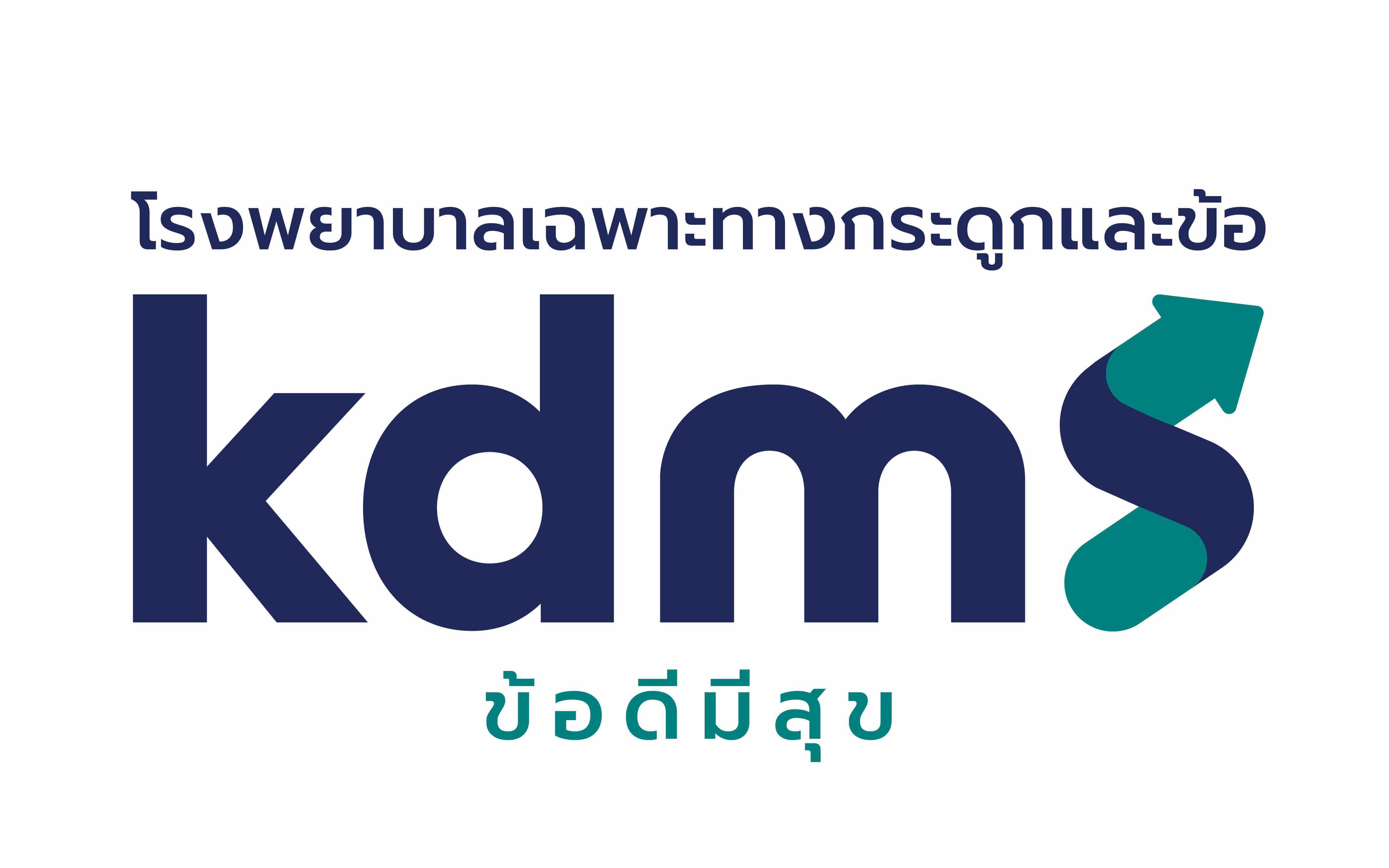

 history
history  appointment
appointment 





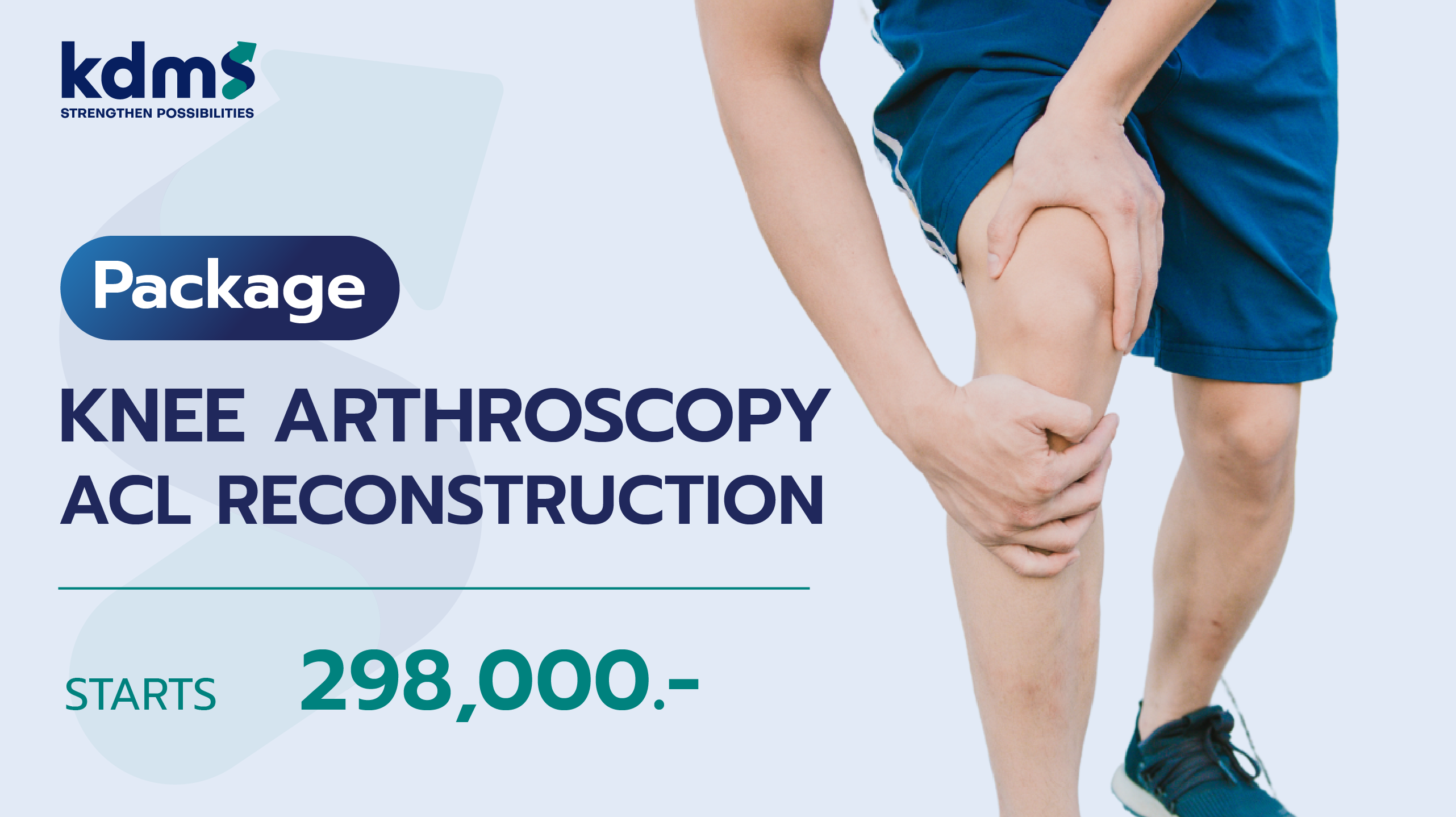
 298,000* บาท
298,000* บาท
 สิ้นสุด 30/06/2024
สิ้นสุด 30/06/2024 
